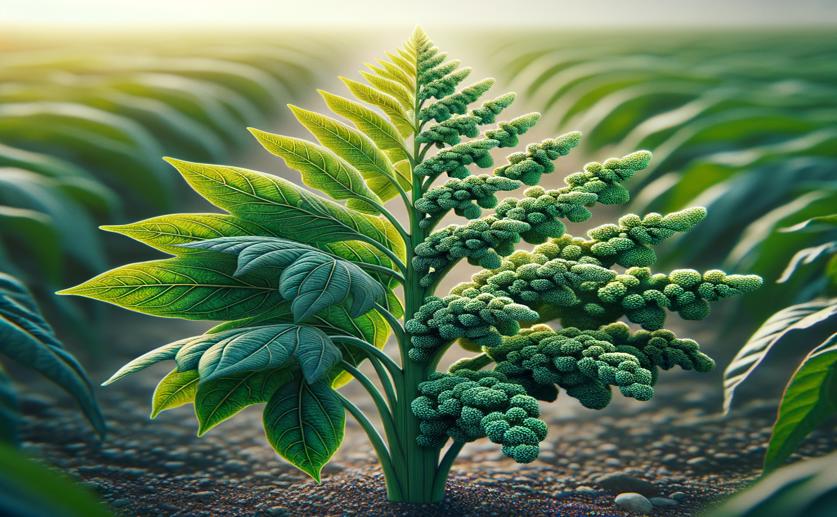
Genetic Study Reveals Key Genes for Downy Mildew Resistance in Quinoa
Jenn Hoskins
25th June, 2024

Image Source: Natural Science News, 2024
Key Findings
- The study was conducted in Spain to understand downy mildew resistance in quinoa
- Researchers identified several genomic regions linked to downy mildew resistance using GWAS
- A single dominant gene on chromosome 4 was found to control resistance in one quinoa variety
References
Main Study
1) Genome-wide association study, combined with bulk segregant analysis, identify plant receptors and defense related genes as candidate genes for downy mildew resistance in quinoa
Published 24th June, 2024
https://doi.org/10.1186/s12870-024-05302-2
Related Studies
2) Quinoa (Chenopodium quinoa Willd.): An Overview of the Potentials of the "Golden Grain" and Socio-Economic and Environmental Aspects of Its Cultivation and Marketization.
3) New Insight into Quinoa Seed Quality under Salinity: Changes in Proteomic and Amino Acid Profiles, Phenolic Content, and Antioxidant Activity of Protein Extracts.
4) Elevated Genetic Diversity in an F2:6 Population of Quinoa (Chenopodium quinoa) Developed through an Inter-ecotype Cross.
5) Genetic resources and breeding approaches for improvement of amaranth (Amaranthus spp.) and quinoa (Chenopodium quinoa).



 21st June, 2024 | Greg Howard
21st June, 2024 | Greg Howard